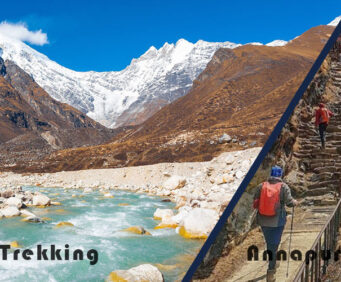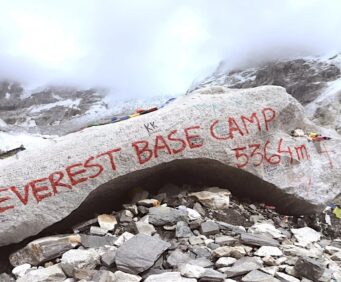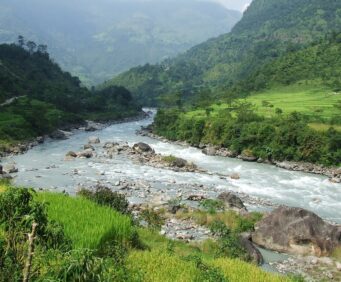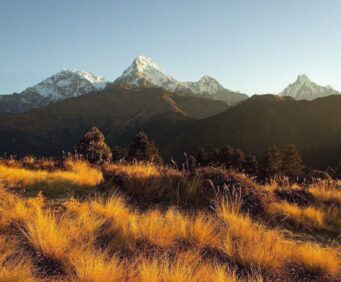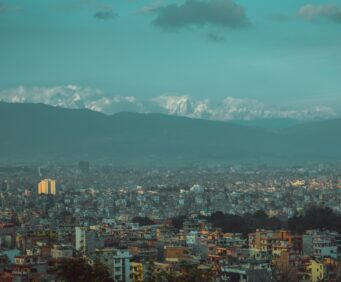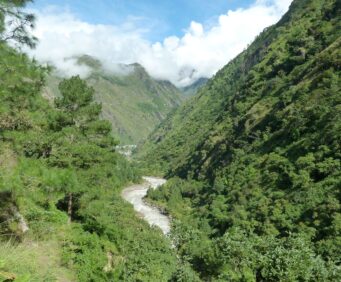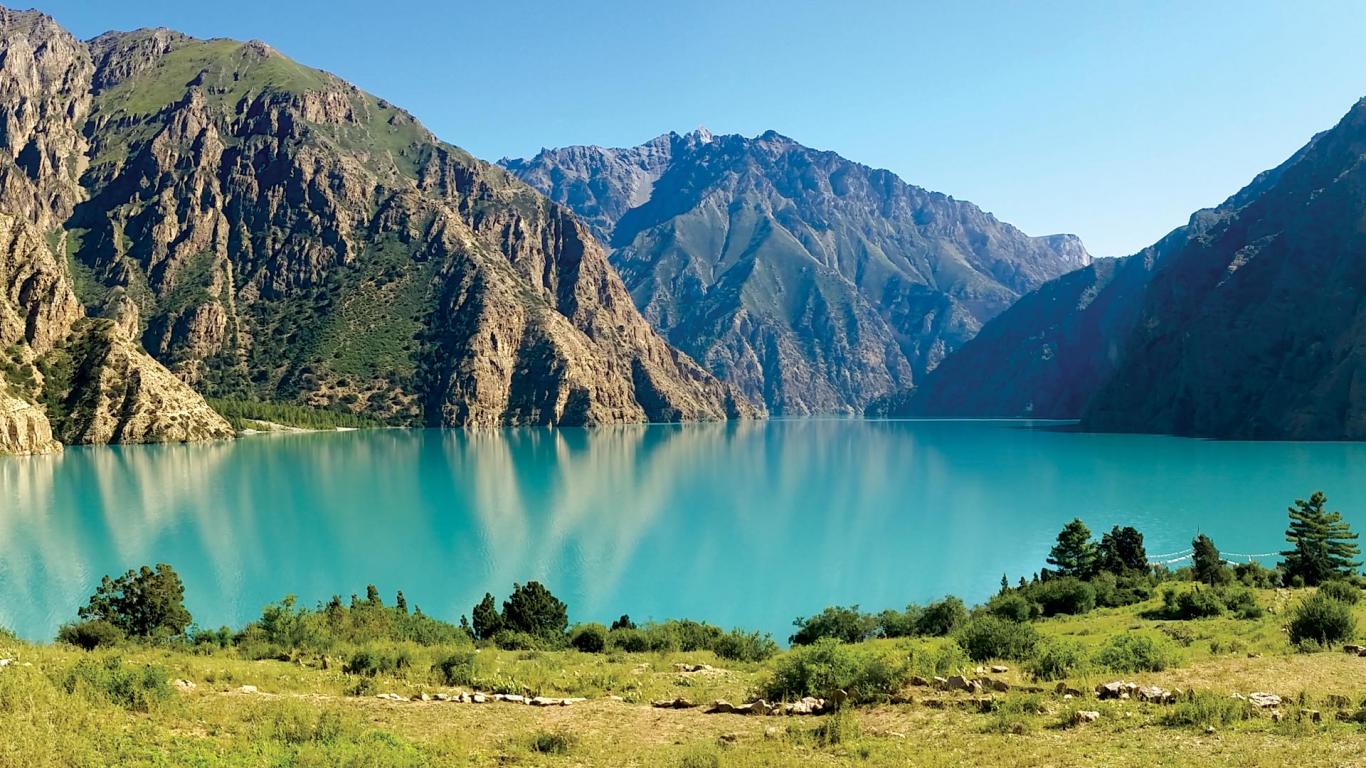
Upper Dolpo Trekking
Overview
The endless, daring, somewhat difficult, and off-the-beaten-path Upper Dolpo Trek is located between the Tibetan plateau and the Dhaulagiri peaks. Explorers were not permitted to trek until 1989, enhancing the beauty of remote parts of Nepal. This Upper Dolpo Trekking offers real adventurers the chance to see the serene, unspoiled culture and rituals of Nepal’s shrouded valley, free from the influence of modernization.
We get to enjoy breathtaking views of pristine lakes, snow-capped hills, remote villages, multiple old Buddhist monasteries, Shey Gompa, and much more. This area served as the filming location for the Oscar-nominated documentary “Caravan.”
In the middle of Nepal, trekking starts with a flight to Nepalgunj and continues until Juphal. The real trek begins in Juphal (on foot). We pass Lower Dolpo and Shey-Phoksundo Lake along the route. As we march on, we pass several monasteries, cross a few high passes, learn about the Tibetan customs and cultures of the surrounding villages, and admire the creativity of Upper Dolpo, which is a restricted area.
Shey Phoksundo National Park, home to the blue sheep and leopard among an amazing array of deserted flora and fauna, is another highlight of our excursion. An exciting journey in western Nepal’s isolated region is the Upper Dolpo trip. Strolling along the historic salt trade route, we pass the scenic Shey Phoksundo Lake, several high passes, and towering mountains.
The arid region between the Tibetan plateau and the Dhaulagiri massif holds a wealth of ancient Tibetan Buddhist culture. Surrounding ethnic communities preserve their ancient ways of life in artistic monasteries like Shey-Gumpa, immersed in prayer flags and unaffected by modernity.
Best Time for the trek
Due to political, cultural, and environmental reasons, trekking in Upper Dolpo requires extremely specialized licenses. The restricted topography remained closed until 1989 AD when it was reopened with the highest limited permit costs. We require national park licenses in addition to limited permits for the Upper Dolpo and Lower Dolpo for the trekking. The following are the costs and necessary permits.
Explorers need to obtain a restricted hiking permit costing USD 500 per person for Upper Dolpo, valid for 10 days. After ten days, fifty dollars a day, for each person.
The cost of a Lower Dolpo restricted hiking permit is USD 20 per person for seven days; beyond that, it is USD 5 per person per day.
A Shey Phoksundo National Park Permit is USD 30 plus 13% tax per individual.
Highlights of Upper Dolpo Trekking
- Picturesque panorama of the Upper Himalayas Pristine Buddhist culture and lifestyle.
- The setting for “Himalayas,” the Oscar-nominated film, and the source of inspiration for “The Himalayan Leopard”
- The serene “deepest lake in Nepal,” Shey Phoksundo Lake
- Proceed through the pristine mountains, vegetation, and fauna of Cang Mara La Pass (5,115 m), Nagdala La (5,353 m), and Tyonta (5,220 m), which are sufficiently close.
- Discover the wildness of Nepal and lead a life of extreme poverty.
Itinerary
Day 01Arrival in Kathmandu (1,350m)
Our office person will be waiting for you at the airport gate when you arrive at Tribhuvan International Airport. Your name tag will be on a board that he is holding. Your hotel transfer will be handled by a private car. You will be dropped off at the car, and your room will be assigned based on your reservation.
Day 02Trek preparation and Kathmandu sightseeing tour
On the day, you will meet your Upper Dolpo Trek guide and assistants. Also, you will have a sightseeing trip in Kathmandu City guides will pick you up at the hotel. You will see a few of the Kathmandu Valley’s UNESCO World Heritage Sites. There will be a private car assigned for the excursion. Patan Durbar Square is an old royal palace that dates back to the sixteenth century that you will explore.
Next, you’ll arrive at Boudhanath, which is one of the largest stupas in Asia, You will next proceed to the well-known Hindu temple of Pashupatinath. You’ll head to Swayambhunath at dusk to see the breathtaking sunset and the Kathmandu Valley. You will then be dropped off to the airport by the car.
Day 03Fly Kathmandu to Nepalgunj
Breakfast will be served to you at the hotel. After that, you will go by car to Tribhuwan International Airport’s domestic terminal to board the Kathmandu-Nepalgunj flight. Nepalgunj is a town in the west of the country, not far from the Indian border.
Nepalgunj has a tropical heat wave. You will be picked up and dropped off at the airport by a private vehicle from the hotel. You will have our trek guide with you on the flight. The flight will last for about fifty minutes. Our office agent will transport you to the hotel at Nepalgunj.
Day 04Fly Nepalgunj to Juphal (2,475 m); Trek to Dunai
You will travel to the Nepalgunj airport for the Nepalgunj-Juphal flight after breakfast. The flight to Juphal will take about thirty-five minutes. Once we get to Juphal, we shall begin our adventure. Since this is where the journey begins, the trail is easy.
It will take 45 minutes of easy walking downhill to get to Kalagauda. After there, you’ll trek for more than two hours along the Thuli Bheri River to Dunai. Rooms will be assigned based on the reservation after we get to Dunai.
Day 05Trek Dunai to Chhepka
We are going to begin our journey adventure today. The walk starts on the traditional Dolpo path. It’s a comfortable stroll. We will show the Shey Phoksundo National Park and Dolpo trekking permits at the Silughar checkpoint. We have now formally entered Shey Phoksundo National Park. After that, we’ll follow the Phoksundo River route.
Furthermore, when we stroll through the verdant tropical jungle, the scenery will drastically change. We are going to pass Shangta, Jutung, and Kageni. At the intersection of Phoksundo and Maiba Khola, we will cross the bridge over Phoksundo Lake. We’re going to travel north to get to Cheppka. When we get to Cheppka, we’ll set up camp somewhere appropriate.
Day 06Trek Chhepka to Chunuwar / Amchi Hospital
We will be traveling the Lower Dolpa Circuit Trek, a well-known track, today. We are going to hike in the opposite direction of the river. We shall go over the Phoksundo River twice using the bridge. This is such a serene route. At an elevation of 3,010 meters, we will arrive at Rechi, our lunch stop. We’ll go along the riverside once more after lunch.
We shall cross a bridge to go across the Yulung Khola and Phoksundo River confluence at Sulligad Dovan. Next, we will arrive at Amchi Hospital, where we will set up our overnight camps.
Amchi refers to the traditional healers who treat illnesses and infections in the Dolpo region using medicinal herbs. This hospital serves as a treatment facility for Dolpo residents as a result.
Day 07Trek to Phoksundo Lake
We’re going to Shey Phoksundo, the deepest lake in Nepal, today. We’re going to walk Phoksundo Lake’s direct trail. We’ll climb up through the cedar forest to get to Palam. A winter colony for residents of Ringmo village is called Palam.
We will first descend to an altitude of about 3300 meters. After that, we’ll ascend to a ridge at a height of roughly 3,875 meters, from where we’ll get the most breathtaking views of Phoksundo Lake, a study in turquoise, and the highest waterfall in Nepal, which has 300 meters.
After that, we’ll go downhill through birch trees to the upper Phoksundo Khola and arrive at the charming village of Ringmo, which has Mani walls and Chortens made of mud plaster.
Day 08Rest day at Phoksundo Lake
We will spend today exploring the area around Ringmo Village and Phoksundo Lake. We will first have a tour of the Ringmo village. A typical Tibetan community with its own distinct culture and customs is the Ringmo community.
Next, proceed in the direction of Tshowa, a lakefront Bon monastery. It was constructed some 900 years ago. It will be an exciting experience to tour the monastery’s interior. We will then make our way down to Phoksundo Lake after that.
On this day, we will tour a few more monasteries and Bon-po holy places. The deepest lake in Nepal, Shey Phoksundo Lake is renowned for its stunning turquoise water and breathtaking surroundings. We will spend the night at the campsite and take in the stunning natural scenery.
Day 09Trek Phoksundo to Sallaghari
One of the nicest trekking days of the Dolpo trek will be today. We’ll ascend via the steep paths that go beside the cliffs above Phoksundo Lake. This portion of the journey resembles the fantastical stroll that authors have written about in their works of fiction.
After that, we’ll descend for about 45 minutes through the lovely woodland. We will then arrive at Phoksundo Khola Camp, which is on the opposite side of the lake. After that, we’ll climb the last portion of today’s trail to get to Sallaghari. Our campsite will be situated amidst the lovely pine forest.
Day 10Trek Sallaghari to Nangdala High Camp
You will make the short hike up to Nangdala High Camp on day ten, which should take around three hours. Our journey will start with an ascent along the Tuk Kyaksa River’s narrow route. We are going to change the riverside a few times. There is calmer water at the rapids where we will cross a bridge above the river.
We will arrive at a broad valley after about thirty minutes of walking from the bridge. We will walk along the canyon for an additional two and a half hours from there. Next, we’ll camp at Kang La/Nangdala Base Camp, which has a large rock slab.
Day 11Trek Nangdala H.C. to Shey Gompa (4,343m) via Nangda LA pass
We will hike to Shey Gompa and Crystal Mountain today, which is the most revered peak in the Dolpo region. We are going to enter the truly fascinating Dolpo region today. We need to cross the Nangda LA or Kang LA passes before we can get there. We’ll need to hike uphill for about three hours on a gravel trail to cross this pass.
Our three hours of work will pay off with breathtaking sights as we reach the summit.
The breathtaking vista from the summit encompasses the captivating Dolpo region, the Tibetan territorial peak, and Crystal Mountain. Walks also offer views of peaks such as Shey Shikhar and Kang Chunne.
At the entrance of Shey Gompa is a red chorten. According to the Tibetan calendar, there is a big festival once every 12 years, or every dragon year. Thousands of people attend this large-scale celebration from throughout the nation.
Day 12Trek Shey Gompa to Namgung Gompa (4,360m) via Shey La Pass
We’re going to tour Shey Gompa today. The stories surrounding the Crystal Mountain are told on an antique scroll found in this monastery, which is thought to be 800 years old. Locally, Shey Gompa is referred to as Shelri Sumdho Gompa.
A summer event known as the Shey Festival is held at this monastery. Shey Gompa is portrayed as Thinley’s son Gompa in Eric Valli’s film “Caravan” and is extensively documented in Peter Mathiesen’s book “The Snow Leopard.”
Day 13Trek Namgong Gompa to Saldang
We will first tour the Namgung monastery. Perched atop a towering rock on either side, this stunning monastery. We will then set off on our adventure. We’re going to stick to the Namga Khola trails. To go to Saldang village, we shall pass through further summer herding areas.
Saldang is a lovely community with lots of dry land and breathtaking hills all around it. We’ll stroll through the village and talk to the residents. Don’t forget to sample the Chyang (barley beer) or Salt Butter Tea in Saldang. In this village, the Dolpo Amchi and ancient Buddhist traditions thrived.
Day 14Rest day at Saldang; hike to Yangjer Gumba
After hiking to Yanjer, we will have an early breakfast. This is the wealthiest monastery in the area. During our exploration of the monastery, we will eat our packed lunch. We will then head back to the Saldang campground.
Day 15Trek to Komash Village
The hike today will take about six hours. After breakfast, we will move towards Komash village. We intend to trail alongside the Saldang Lek on the Rapyha Khola. After climbing to an elevation of 4,500 meters, we will descend to Komash settlement. The majority of Tibetan villages are like this one. We’re going to camp at Komash village.
Day 16Trek Komash Village to Shimen
Once we finish our meal, we will start our trip. This day’s hike may bring us into the uncommon species of snow leopard and blue sheep. During today’s hike, we will pass by several little communities.
There are a lot of highland desserts with shrub-like vegetation during this section of the walk. The trails are easy and not too challenging. Approximately four or five hours of walking will get us to Shimen. At a possible campsite, we will build up camp.
Day 17Trek to Tinje village
We are going to be following the Panjyang Khola paths today. The trails leading to Tinje will take us past several stunning towns and monasteries. We’ll be walking for around five hours in total. The lovely valley of Tinje has a natural aviation strip where a British plane once touched down and took off.
Day 18Trek Tinje Village to Yak Kharka
We will travel to Yak Kharka today; the walk should take five to six hours. We’ll travel the paths beside the Panjyan River, passing through the tiny community of Chhamdang. Following Chhamdang, we shall stroll down the riverbank for a while until arriving at the meeting point of Panjyan Khola and Chholtam Khola.
We will come to an open yak and sheep grazing area after crossing a bridge over Thalum Khola. The name Yak Kharka refers to this wide area.
Day 19Trek to Tokyu
Today, we will leave Yak Kharka and travel to Tokyo. First, we’ll cross the Sulun Khola bridge to reach the 5,040-meter-high Choila North Pass. This is a rather challenging section of the hike.
It will take us over two hours of climbing to the summit of Choila Pass. There’s a stunning view of the Tokyu camp from the summit. We will approach Tokyu, where we will pitch up camp, after descending from the pass.
Day 20Tokyo to Dho Tarap (3,944m) Rest day
Today, we will trek to Dho Tarap, a short hike of about thirty minutes. After reaching Dho Tarap, we will explore the village. Dho Tarap is a large village decorated with colorful Buddhist prayer flags.
Many monasteries, stone walls with Buddhist inscriptions, and small stupas surround it. This settlement is made even more beautiful by its lovely fields of wheat, barley, buckwheat, potatoes, and other green crops. At Dho Tarap, there are lodges and tiny tea shops. These people are similar to Tibet’s Khampas. Men with a ponytail and a crimson tassel wound around their heads are referred to in this way. Women adorn necklaces made of musk deer teeth.
This town is vividly depicted in the well-known Eric Valli film “Caravan,” in which Karma, Thinley, and their gangs go across the high passes to trade salt for barley. Together with taking part in cultural events when the locals perform traditional Tibetan dances and songs, we will have a fantastic natural excursion.
Make an informed decision when exploring the monasteries near Dho Tarap. Mekhyim Monastery, Dhoro Monastery, Drakmar Dewa Monastery, and Ribo Bumpa Monastery are a few of the monasteries.
Day 21Dho Tarap to Naworpani (3,475m)
We have a longer trip ahead of us today because we have to cover more ground than we have in the past. We’ll hike along the level trail that leads to the meeting point of Tarap Khola and Mirubabane Khola. After that, we’ll cross a bridge that spans Langa Camp and Klang Khola.
We’ll keep going down the trails that parallel the Tarap Khola. This portion of the hike offers a stunning, scenic perspective of the astounding scenery. We’ll pass by several lovely Sisaul, Gyamghar, and Toltol towns. Following that, we shall arrive at Naworpani, our campsite. We’re going to camp at Naworpani.
Day 23Naworpani to Lashicap (2,775m)
To get to Tarakot today, we will hike through the verdant areas above the Thuli Bheri River. We will cross a short bridge across a brook after arriving in Tarakot. On this day, we shall pass Lawan and Byasgad. Today will pass through some woodland areas, terraced fields under cultivation, and other vegetation. When you go to Dunai, you’ll be given a room.
Day 24Trek to Juphal
The journey is coming to an end today. Our route will take us beside the Bheri River till we arrive at Kalagawda. We shall climb a few times after Kalagawda to get to Juphal. The hike up to Juphal will only take a few hours, maybe three.
Day 25Fly Juphal to Nepalgunj; Fly Nepalgunj to Kathmandu
We will eat breakfast in the early hours of the morning and proceed to the Juphal airport in preparation for our early trip to Nepalgunj. Today, we’re going to fly to Nepalgunj. Depending on when your flight is, you will have some free time in Nepalgunj to explore the area.
You will arrive in Nepalgunj in the afternoon to catch your aircraft to Kathmandu. Our office person will come to pick you up in Kathmandu and take you to the hotel. You have the remainder of the day to explore and take in Thamel’s nightlife.
Day 26Final Departure
Depending on when your flight is, you can continue to shop and enjoy Thamel Bazaar until the time of your final departure. You will be dropped off at Tribhuwan International Airport by our private vehicle for your last journey.
Not satisfied with this itinerary?
Are you interested in planning a customized trip that suits you?
Useful Info
Best time to visit Upper Dolpo:
Upper Dolpo Trekking is necessary at the ideal moment to have a productive vacation. The best times for hiking in the upper Dolpo region of Nepal are fall (October and November) and spring (April and May). The primary seasons offer fantastic weather, a clear sky, breathtaking scenery, and comfortable temperatures. At high altitudes, there is a reduced likelihood of snow and delayed flights.
Difficulty:
Since Upper Dolpo Trekking is among the most isolated Camping Trekking, it is regarded as a challenging level. The off-the-beaten-path expedition spends some nights above 3500m and traverses three passes with difficult ascents beyond 5000m. On certain days of the higher Dolpo Trekking, we must walk for more than six hours.
But, we must be prepared for the discomfort and physical demands of a camping excursion before taking on this form of hiking. Experienced trekkers and those who have visited Nepal before are advised to take on this task; newbies are not advised to do so.
Meals and lodging:
The Dolpo region’s terrain is more tough, isolated, and unsuitable for agriculture and living. Food shortages frequently affect the residents in the area. Along the trail, there are no suitable housing or dining areas. We must therefore get ready for our camping treks.
We need to live in tents and transport our food and fuel while trekking. Our company offers numerous journeys to the Dolpo region, accompanied by top-notch porters, guides, and Sherpas. Make sure we have adequate food, supplies, and equipment for the hike if we wish to undertake the higher Dolpo trek.
Cost of Dolpo Trek:
Trekking with a camping setup is far more expensive than a tea house excursion. Our 27-day Upper Dolpo Trekking includes all essential transportation from Kathmandu to Nepalgunj and Juphal, as well as food, supplies, tents, equipment, fuel, labor (porters and sherpas), cooks, and guides. The following is the total cost of the Upper Dolpo Treks package:
- The cost of Upper Dolpo Trekking for groups of two to nine people is USD 3,500 per person.
- The cost of Upper Dolpo Trekking for groups of ten to twenty people is USD 3,000 per person.
FAQs
How difficult is Upper Dolpo Trek?
In Upper Dolpo, trekking is regarded as difficult. Some lengthy trekking days are lasting six hours or longer, hard ascents, three passes over 5000 meters, and multiple nights spent over 3500 meters

